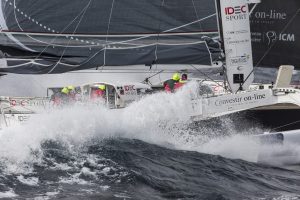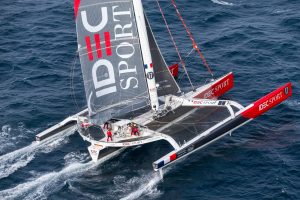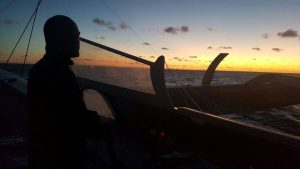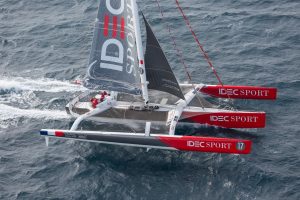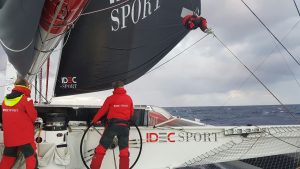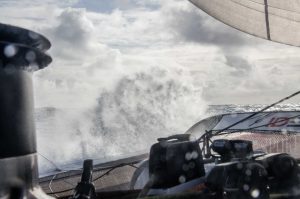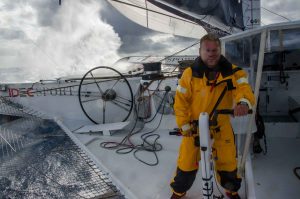IDEC SPORT more than 4 days and 6 hours ahead of the record at the Horn.
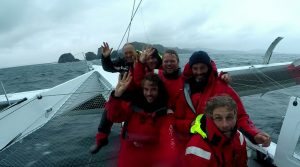
The IDEC SPORT maxi-trimaran skippered by Francis Joyon crossed the longitude of Cape Horn, the last of the three major capes in the Jules Verne trophy at 0004 UTC on Thursday 12th January.
After leaving Ushant on 16th December, Joyon and his crew of five, Clément Surtel, Sébastien Audigane, Bernard Stamm, Gwénolé Gahinet and Alex Pella have achieved the best intermediate time between Ushant and Cape Horn, completing this stretch in 26 days, 15 hours, 45 minutes some 4 days 6 hours and 35 minutes ahead of the reference time set by Banque Populaire V in 2012 (30 days, 22 hours and 19 minutes).
This is their fourth intermediate record including the Pacific Ocean record between the SE of Tasmania and Cape Horn with a time of 7 days 21 hours and 14 minutes (record held by Bruno Peyron since 2005 with a time of 8 days, 18 hours and 8 minutes).
IDEC-SPORT sailed the 18,332 miles out on the water between Ushant and Cape Horn at an average speed of 28.7 knots.
Jules Verne Trophy reference time / Banque Populaire V (2012): 45 days, 13 hours, 42 minutes and 53 seconds
Source : www.idecsport-sailing.com


